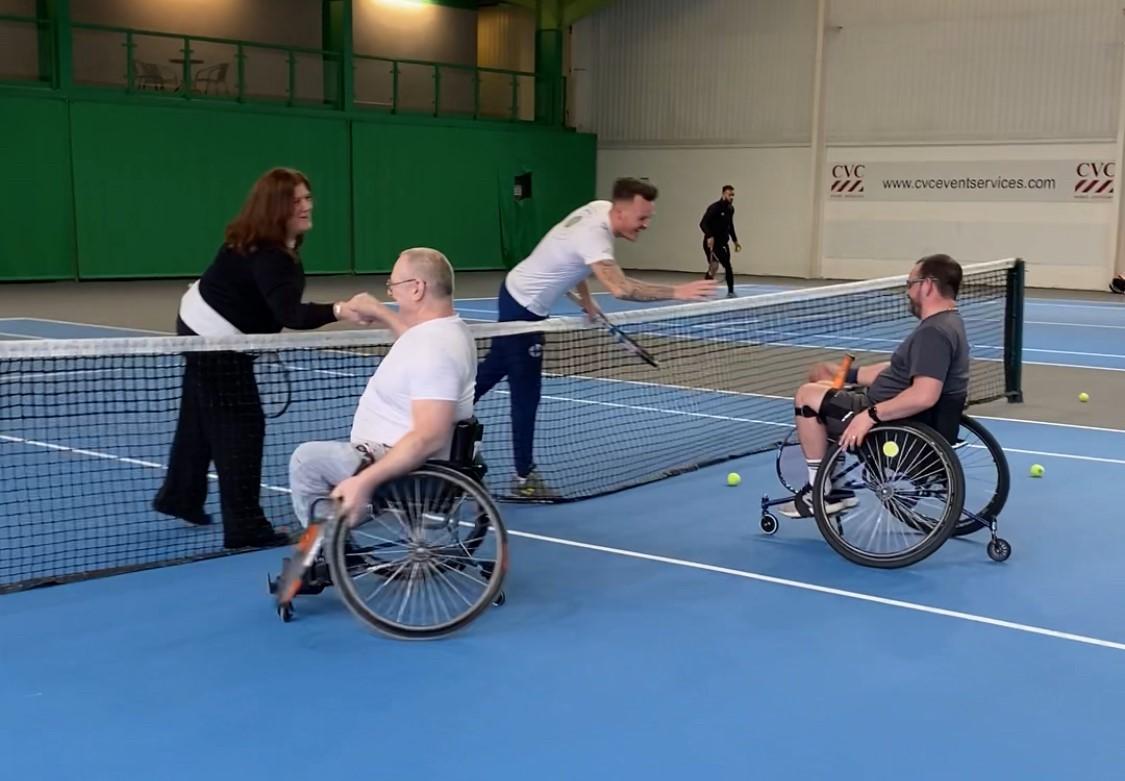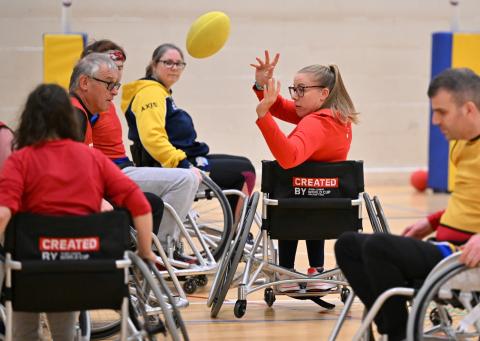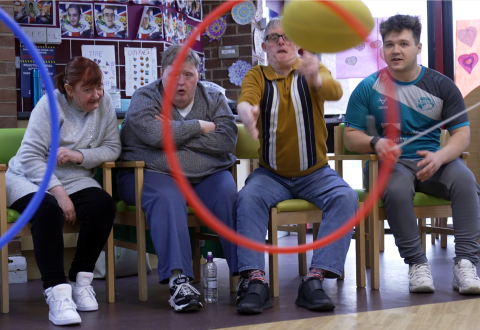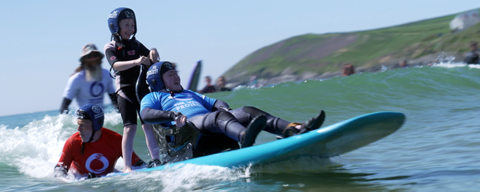Using the S.T.E.P. principle to adapt activities
 Play Video
Play Video
Here at Every Body Moves we regularly hear from coaches, instructors and providers who are looking to make their activities and sessions more inclusive for the disable community to particpate in sport, physical activity and ways to move. From the many tools and methodologies available, one we've found popular amongst our Club of the Month winners is the S.T.E.P. principle. A practical framework coaches can use to adapt their activities, ensuring they are accessible and enjoyable for everyone. The acronym stands for:
Space
Task
Equipment
People
It's commonly used in the PE and school sports, but the principles work in all settings. By considering and modifying these four elements, coaches can create a more inclusive environment. Here’s how:
SPACE
This is all about changing the space in which the activity takes place.
Creating an inclusive physical environment is the first step in ensuring that all participants can engage comfortably in activities. Overall questions such as whether the venue itself has accessible facilities (eg changing rooms, toilets, step free access, parking, public transport etc) is your first port of call. Consider the suitability of the surface for all participants and activities you intend to run. Smooth level surfaces are ideal for wheelchair users and participants using mobility aids. Grass and carpets are more challenging but do add a bit of cushioning. Will weather have an impact?
Adjust the size of the playing area based on the needs of participants. Reducing the size for the playing area can make it easier to navigating the space and manage participants exertion levels.
Use clear and visible markers to define boundaries. Brightly coloured cones or tape can help visually impaired participants.
Space - top tips
Create smaller, more manageable zones within a larger playing area.
Choose an appropriate surface accessible to all participants and clear of obstacles.
Use tactile markers or contrasting colours to help different areas of the space.
TASK
This is about changing the nature of the activity, game or tasks to be more accessible.
Tailor the complexity and rules of your activities to cater to the varying abilities of participants, eg standing/sitting, walking/running... it's all about movements that suit the individual. Offer different levels of challenge within the same activity, and be creative with rules to accommodate different needs and levels of inclusion. For instance, allow more time for certain participants to complete a task. Break down instructions into smaller, more manageable steps that use clear and simple language, and repeat instructions if necessary.
Task - top tips
Incorporate a variety of tasks for on the spot adaption and offering participants options to choose what suits them best.
Be flexible and creative with rules and ways to participate to increase inclusion.
Use visual aids or demonstrations to supplement verbal instruction.
EQUIPMENT
This all about changing the thing used to play the game or complete the activity.
Adaptive equipment does not have to equal high expenditure. Ask participants what they needs or that works best for them. Be creative and use what you have to hand (eg balloons instead of balls, bean tins instead of weights), safely adapted items if you feel happy (eg lengthening/shortening sticks) and also seek out online resources from individuals that have done the same. Using adaptive equipment can significantly enhance inclusivity. Providing a range of equipment allows a broader range of participants and abilities to take part effectively. For example, lighter or larger balls can be easier to handle. Incorporate assistive devices such as grip aids, adapted bats, or harnesses to support participants with specific needs. Ensure all participants have access to appropriate safety gear, such as helmets, pads, or protective eyewear, and that any kit you've adapted is safe and fit to use.
Equipment - top tips
Chat with your participants to collaboratively find solutions that work for them.
Using brightly coloured, tactile or auditory equipment will assist VI participants.
Start with the answer being "yes!" and embrace the opportunity to find creative equipment solutions.
PEOPLE
This is all about making changes to the people participating in the activities and extends to staff (coaches, volunteers etc), participants, and wider family or support networks.
This might include changing the numbers or ways in which people are involved and how they interact which each other. Provide training for coaches, volunteers, and participants on disability awareness and inclusion. Understanding diverse needs fosters empathy and cooperation. Encourage peer support and buddy systems where participants can assist each other. Use inclusive communication methods, such as sign language interpreters, visual aids, or communication boards for non-verbal participants.
People - top tips
Crew up as needed - Upskill staff and/or bring in volunteers or support staff etc.
Promote a positive and inclusive attitude among all participants
Encourage feedback from participants and their families on needs and preferences to continuously improve inclusivity of your provisions. It's a continuous journey of collaboration and evolution.
CONCLUSION
Creating an inclusive environment in sports and physical activities requires simple but thoughtful adjustments and a commitment to understanding and meeting the needs of all participants. By applying the S.T.E.P. principle, coaches can effectively modify the space, task, equipment, and people involved in their activities, ensuring everyone has the opportunity to participate, enjoy, and benefit from physical activity. Inclusion is not just about accessibility; it's about fostering a sense of belonging and community for all.


